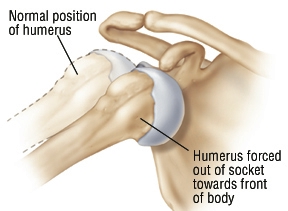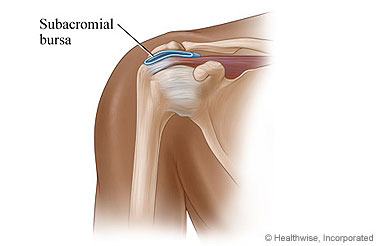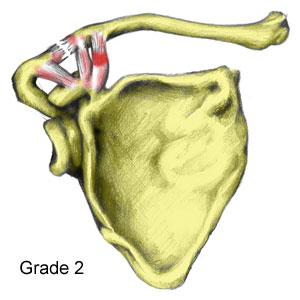Orthopaedics 360 INFO
Shoulder arthritis is a debilitating condition, often resulting in night pain and the inability to use your entire arm. It can be caused by general wear and tear, and commonly affects overhead activities. Shoulder arthritis affects the range of movement of a shoulder joint and can limit the ability to perform normal activities.
The image on the left shows an arthritic shoulder. The symptoms that you would experience with shoulder arthritis are:
- Joint Stiffness
- Pain with overhead activities
- Night pain
- Pain when lifting objects, and reaching for items.
Once shoulder arthritis is suspected, non operative modalities are optimised to manage the pain.
Non operative management options for shoulder arthritis are an excellent start, as shoulder arthritis can be much better tolerated than weight bearing joints such as with hip arthritis or knee arthritis. Often someone with shoulder arthritis can go for a long time before needing operative intervention. The modalities below are general for all arthritis, and can be useful when shoulder arthritis is diagnosed.
- Regular Panadol Osteo – This is the same as regular Panadol (Paracetamol) however the dose per tablet is slightly higher. This means that you should only take up to a maximum of 6 tablets per day rather than the usual 8 for Panadol.
- Glucosamine and Fish Oil – A large study performed in the USA found that there was a benefit in approximately 2/3rds of patients suffering from pain from osteoarthritis of the knee or hip. This helped to reduce the perceived pain. Glucosamine and Fish oil act as a natural anti-inflammatory and can be a great supplement to your usual medications as the risks are comparatively low. Fish oil has other beneficial effects for the rest of the your body, not just your joints. These agents will never repair cartilage, but can act to prevent inflammation which can be harmful to a joint.
- Anti-inflammatory medication – Taken in short spurts, this can be a safe and effective method to reduce pain. Anti-inflammatory medication can interact with other medications, so ensure that you check with your doctor first. You should only take this sort of medication on a short burst regimen. A few days on and then a few days off.
- Physiotherapy – to maintain range of movement and rotator cuff strength.
Operative Treatment
When shoulder surgery is considered, there are 2 main types of shoulder replacements. Conventional and Reverse. These are distinctly different. A conventional shoulder replacement is one where the shoulder is replaced normally – i.e. the ball (humeral head) is replaced with a metal humeral head and the socket is replaced with a plastic socket. This relies on a good quality and intact rotator cuff to function. A reverse total shoulder replacement is used when the rotator cuff is not of good quality, or is torn, and reverses where the components are. Reverse total shoulder replacements are becoming more used now, as it is a very stable joint that does not rely on good quality rotator cuff tendons for a good result.
A reverse total shoulder (on the right in the above diagram) is used when the rotator cuff if of poor quality, which is a common finding. This enables the shoulder to obtain excellent function, without relying on the rotator cuff tendons.
Shoulder Dislocation
Orthopaedics 360 INFO "A Place to Learn" A shoulder dislocation can occur with sporting activities, or an accident where the arm is forced into an awkward position. The most common type of dislocation is called an "anterior" dislocation, where the ball (humeral head)...
Subacromial Bursitis
Orthopaedics 360 INFO "A Place to Learn" Shoulder bursitis is a common issue, causing difficulties with overhead movements and pain. It can come out of the blue, or due to irritation from repetitive movements. When it is suspected, there are a number of things that...
Acromioclavicular Joint Dislocation
We are currently creating fantastic new content to help our patients navigate the world of Arthritis and Sports Injury management. Please check back shortly Orthopaedics 360 INFO "A Place to Learn" An Acromioclavicular (AC) Joint disruption is fairly common, and...
Orthopaedics 360
Orthopaedics 360
P: (08) 7099 0188
F: (08) 7099 0171
Southern Specialist Centre
Orthopaedics 360
P: (08) 7099 0188
F: (08) 7099 0171
Health @ Hindmarsh
Orthopaedics 360
P: (08) 7099 0188
F: (08) 7099 0171





